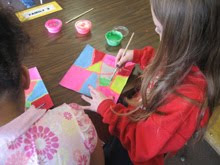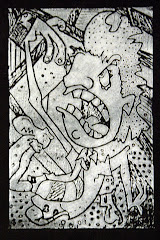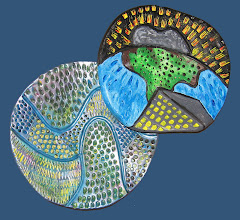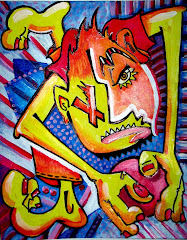 Blogs: Like this teaching portfolio, blogs could be used with new 1 to 1 technology to help students photograph projects, write and post project reflections/self critiques and have an online portfolio of their work. The student blog could also serve as an assessment tool for the teacher.
Blogs: Like this teaching portfolio, blogs could be used with new 1 to 1 technology to help students photograph projects, write and post project reflections/self critiques and have an online portfolio of their work. The student blog could also serve as an assessment tool for the teacher.
During class critiques, students could follow along on iPads or lap tops and offer constructive criticism.
Parents would also have access to these sites and could monitor their child's progress.
To the right is an image that may be uploaded for assessment. (It's an ugly mug; it's supposed to look this way). Speaking of assessment - rubrics for the visual art would be bases on Bloom's Taxonomy for Art. More can be found by following this link. www.bloomstaxonomy.org
Parents would also have access to these sites and could monitor their child's progress.
To the right is an image that may be uploaded for assessment. (It's an ugly mug; it's supposed to look this way). Speaking of assessment - rubrics for the visual art would be bases on Bloom's Taxonomy for Art. More can be found by following this link. www.bloomstaxonomy.org
Virtual Field Trips - While it's unlikely many students will get to visit the Louvre in Paris - they can get there virtually. This is a link to the Louvre's online tour. Flash is required to view.
http://musee.louvre.fr/visite-louvre/index.html?defaultView=rdc.s46.p01&lang=ENG
Facebook is also a great way to communicate happenings in your schools art department and offers easy access to parents into the classroom. Bell ringers, daily expectations, and daily work could be posted for student access. This may help students make up work should they be absent from the class. I made this page in about 10
minutes. www.facebook.com/yourartdepartment
This portfolio has it's own Facebook page - www.facebook.com/mrdportfolio
This portfolio has it's own Facebook page - www.facebook.com/mrdportfolio



















